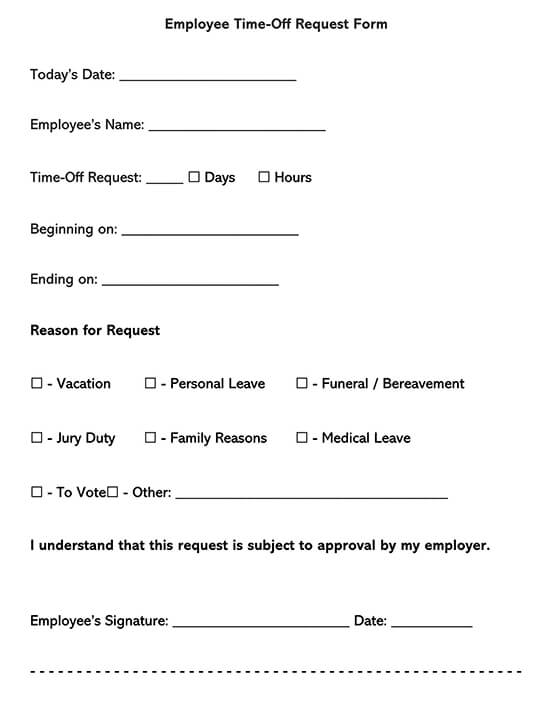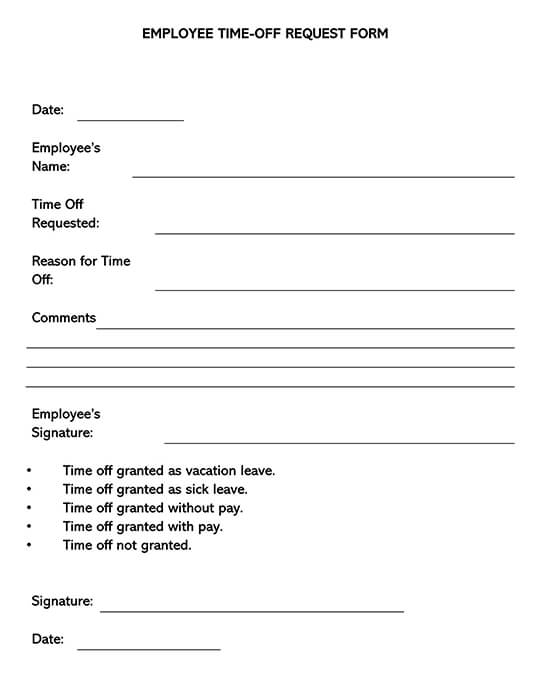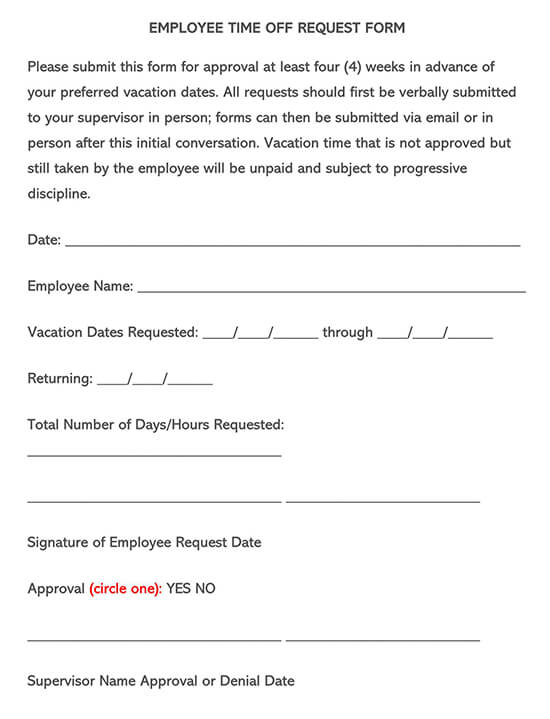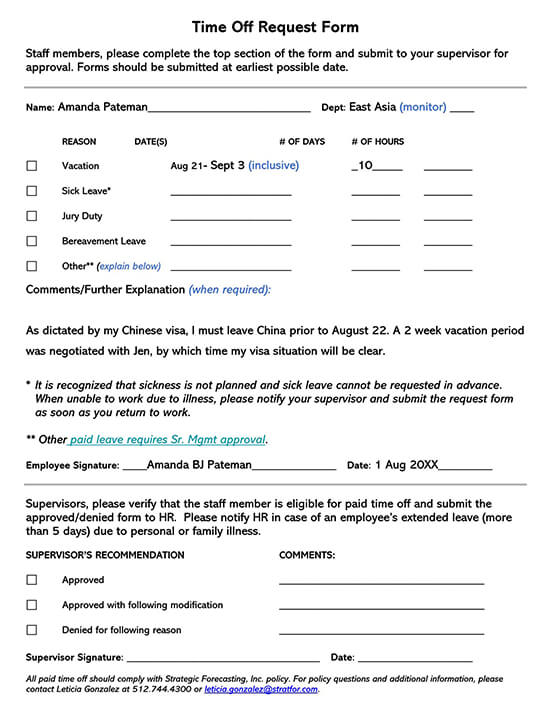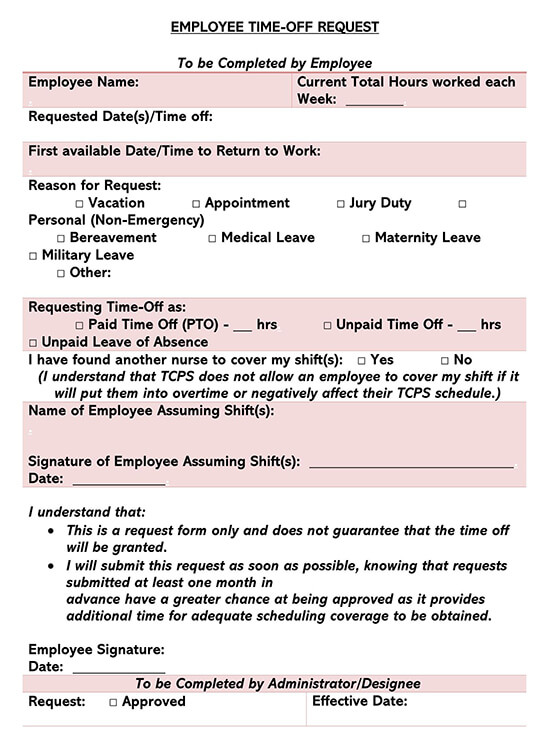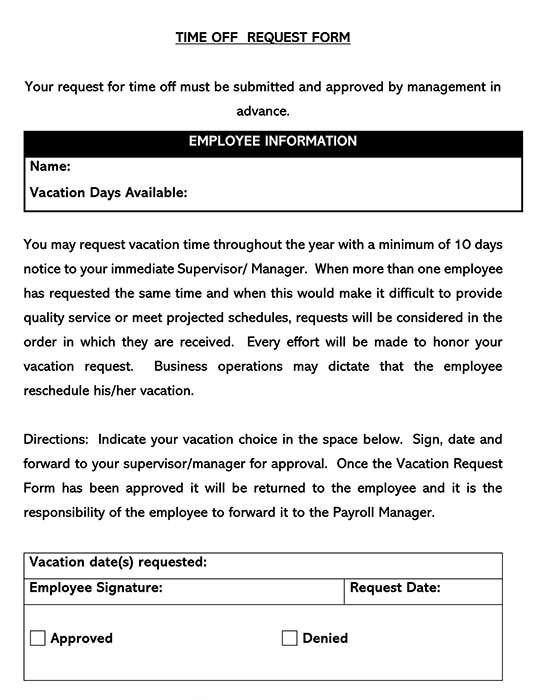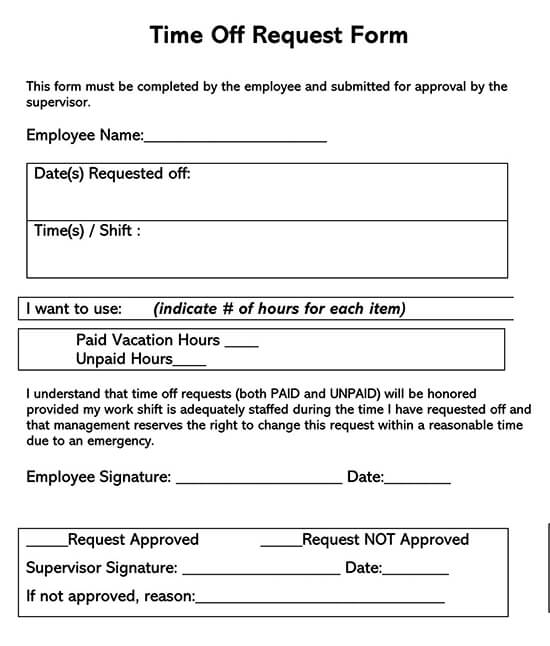Every employee will need to take time off at a specific time in his or her career, be it due to medical leave, vacation, or unexpected circumstances. In such a situation, you will have to communicate your intention of taking time off work to your employer. Employee time off request form will come in handy in streamlining the process of requesting the leave. In this piece, we will explain the importance of time off request forms and how to create one ideally.
Free Templates
The Importance of Employee Time off Request Form
A time off request form has a vital role in both the employees and the company they work for. Providing an advanced notice for your time off makes it simple for the firm to find coverage if need be. If you are taking an extended leave due to medical reasons, including maternity leave, then the time-off request form will offer the anticipated dates of your leave, allowing the employer to train a temporary replacement.
A time off request form also acts as a professional and formal tracking document. Employers can easily keep records of all the time-off that an employee has taken to effectively calculate time owned in case the employee decides to leave the firm.
The Steps Involved in Creating an Employee Time off Request Form
If your firm does not have a formalized employee time off request form, as the employer, you can use the following steps in creating one:
Identify the vital details.
Provide the instructions
Come up with a form that can be filled
Communicate the policy to your employees
Post the form
Identify the Vital Details
Start by deciding the information needed from your employees before you deny or approve their time-off request. This includes the reason for the time-off and dates being requested. Some institutions, like schools, will have to look for a substitute tutor or provide lesson plans. Ensure you include these details in the form if your company needs them.
Provide the Instructions
Come up with a clear set of steps that the employees should follow when filling and submitting the form. This includes the advance period within which they should submit the form, to whom the form should be sent to and how the employees will receive the notice of approval and denial.
Come up with a Fillable Form
Now that you have already come up with a list of information you require from your employees and the process to be followed when requesting time-off, it’s time to create a fillable form. A fillable form means a form that can be filled online or be printed and filled manually.
Communicate the Policies to your Employees
This involves making sure your employees are made aware of all the processes involved in requesting time off. You should also add the policies and a copy of the time-off request time frame template to the employee’s handbook.
Post the Forms
Now that everything is clear and set, you can provide your employees with the forms or post them on your company’s website where they can fill them online or print them.
What are the Best Practices for Submitting a Time off Request Form?
As an employer, there are several practices for submitting the time off request forms as outlined below:
- You need to be aware of union requirements, especially if your employees are unionized. This is because there is mandated time off regulations for all union workers.
- Reward your employees when they choose to stay and work, even if it’s a holiday or during a high employee time of period.
- Track your employee’s previous time-off to ensure they are not misusing the system.
- Provide clear deadlines when it comes to submitting advanced time-offs. But remain flexible with the vital situation such as sudden illness and bereavement.
- Make use of rotating holiday schedules if your company remains open even during major holidays to eliminate the possibility of having the same employees working every year.
- Apply seniority in determining who receives the time off when multiple people have requested the time off at the same time.
